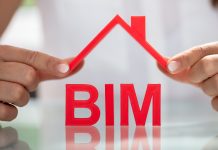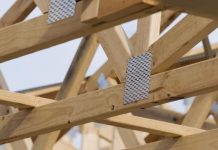Paul Surin, Vice-Chairman of BIM4M2, and a member of the Built Environment Executive for the IET, evaluates the role of BIM for innovation in housing and describes how it can help overcome the performance gap, leading to a reduction in carbon emissions
The long anticipated government deadline for adopting, and compliance with, BIM Level 2 on public sector projects has gone. So, what next for BIM? With the recent closure of the Zero Carbon Hub and government’s withdrawal of the 2016 Zero Carbon Homes policy; can BIM drive innovation in housing? What is the role of BIM in the built environment and sustainable housing? I hope my thoughts here will help to kick-start further discussion.
So why should we utilise “BIM” in housing?
What is the role of BIM in the built environment? I have been in many meetings, and I always seem to face the same arguments such as; “we have been building houses for ages”, “we know what we are doing”, “we don’t need you to tell us how to build a house.” That’s fine, but why are we having debates and discussions about the performance gap in housing?
There is significant evidence to suggest that buildings do not perform as well when they are completed as was anticipated when they were designed. We only need to look at the recent studies about the mind-blowing gap between as-built and as-designed. We usually struggle to communicate the intended energy performance for the design from the earliest stages, and we have ongoing problems with communicating the design intent throughout detailed design. We also don’t communicate back from site what is, and what is not buildable. This greatly influences architectural detailing issues and site practices that may have been acceptable 20 years ago, but now no longer meet the required standards. Finally, there is nearly a complete absence of engineering rigour around the design and installation of the services for our homes. Buildings contribute 40% of global carbon emissions. Furthermore, the energy consumption of domestic buildings alone accounts for approximately 25% (Kelly S 2015). Accordingly, the UK government’s Construction 2025 Strategy has been put into place to address this statistic and the target for a 33% reduction in the whole-life cost of built assets and a 50% reduction in greenhouse gas emissions by 2025 (Blackwell B 2014).
These percentages represent significant factors that amplify the need for corporations to reduce carbon emissions and cost where feasible. Through the utilisation of BIM, carbon and cost can be decreased extensively from cradle to grave, particularly from sustainable solutions that improve operational energy consumption and LEAN efficient employments. The requirement for fast and proficient deployment of BIM must be controlled for the end-users and justified for all project categories.
Should we embrace innovation in construction and housing, and does it matter?
You won’t be surprised with my answer: yes, it does matter, and we should embrace innovation in construction and housing. Construction innovation is becoming essential for transformation of the UK industry, delivering value throughout the supply chain and delighting the end customer with the outcome. The focus of attention on innovation and digitalization will improve the reputation of our industry by increasing the performance of the end customer businesses, and their customers who use the assets.
The application of innovation to the construction industry is not straightforward, despite the importance of this sector in the development and growth of the wider economy. Innovation needs to change from being just the application of good ideas, to a process that can be managed, measured (in pounds and carbon) and controlled systematically. Innovation in the construction industry can be standardised as long as it is treated as a process. This is why we should use BIM across the industry no matter the value or nature.
I believe if businesses adopt an innovation such as BIM, they will benefit from:
a) Better integration of the company’s management processes within the company’s overall strategy;
b) Improvement in the company’s competitiveness in the medium and long-term;
c) Improvement in organisation of activities – collaboration, no waste activities;
d) Systematisation of new processes and knowledge;
e) Embracing and adopting new technologies, and finally, and most importantly, from their customer satisfaction which means repeated business opportunities.
How can digitalization of construction & BIM help to close the performance gap?
Digitalization and BIM could lead to more projects being delivered on time and on-budget. It could also lead to a nearly zero performance gap. How? Well, with better collaboration across the supply chain and with all stakeholders involved at an early stage, everybody will be able to understand how buildings are expected to perform, and what they should cost (with the right bill of quantities, delivery schedules, build schedules) to build, maintain and last. The ease of knowledge transfer means that the relationship between product manufacturers, designers, builders, marketers, occupants, and maintainers is closer, helping each group to understand the challenges of the other.
Wienerberger has been working on the e4 house concept as a model for the future of UK housing. Designed in conjunction with ARUP, the concept has been developed to address the need for affordable, sustainable housing in the UK. It uses BIM by giving solid foundations to BIM Level 2 compliance – giving all stakeholders a comprehensive digital plan to build & maintain. It also provides a BIM Level 2 compliant e4 Common Data Environment (CDE) with geoBIM advantages (product tracking, density data, weather data, ecology simulation, flooding simulation from real data). The model within the e4 CDE automatically shows real-time thermal performance, running cost, daylighting and sky simulation & calculations. It will also highlight any potential and real clashes within the federated model (structural, MEP, architectural, etc.). All this equals zero re-work.
As I mentioned at the start of this article, I hope to kick-start further discussion regarding the role of BIM in housing innovation, so would welcome your thoughts. ■
. . . . . . . . . . . . . . . . . . . . . . . . . . . . . . . . . . . . . . . . . . . . . . .
Paul Surin
Vice-Chairman of BIM4M2, Member of the Built Environment Executive for the IET, and Head of Built Environment at Wienerberger UK
BIM4M2 Group on LinkedIn










